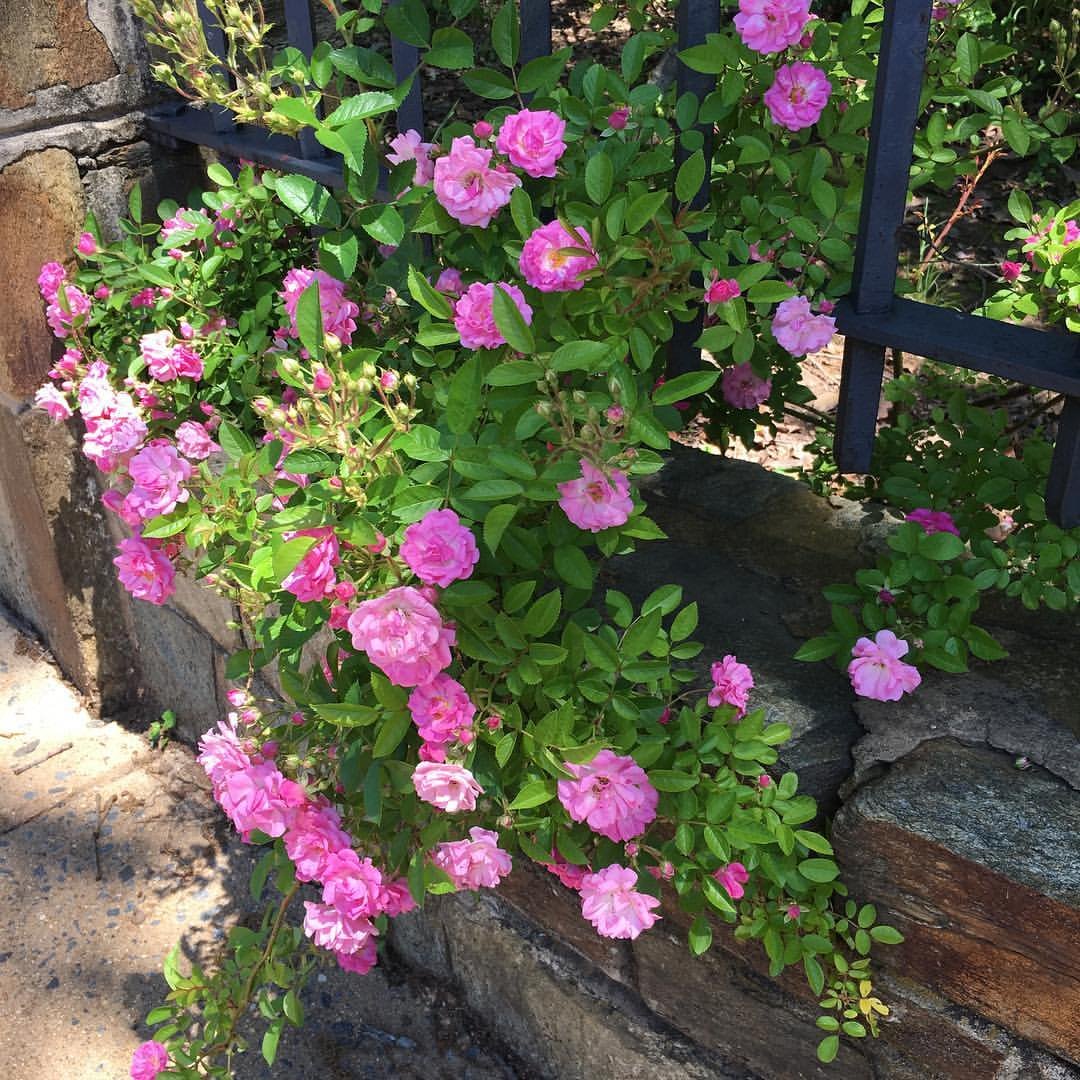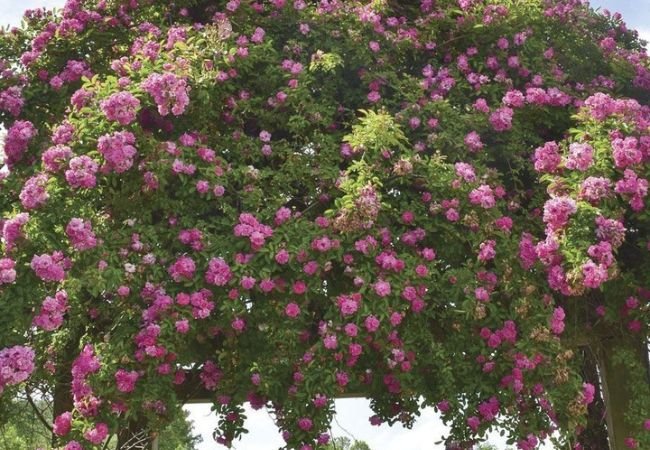Unlock the secrets to growing stunning Peggy Martin climbing roses with this comprehensive care guide. From planting to pruning get expert tips for ensuring your climbers thrive.
Peggy Martin climbing roses are a true delight for any garden. With their eye-catching coral-pink blooms and vigorous climbing habit, they add both beauty and vertical interest. However, like any rose variety, they require some special care to truly flourish. This guide covers everything you need to know about growing these lovely climbers successfully.
Here’s a short information chart for Peggy Martin climbing roses:
| Attribute | Description |
|---|---|
| Common Name | Peggy Martin Climbing Rose |
| Scientific Name | Rosa ‘Peggy Martin’ |
| Growth Habit | Vigorous climbing |
| Flower Color | Soft pink with a hint of lavender |
| Bloom Season | Blooms repeatedly throughout the growing season |
| Fragrance | Mild fragrance |
| Disease Resistance | Highly resistant to diseases, including black spot |
| Hardiness Zone | USDA Zones 6-10, can survive colder winters with protection |
| Sun Exposure | Full sun |
| Soil | Well-draining, fertile soil |
| Watering Needs | Regular watering, avoid waterlogged soil |
| Pruning Needs | Prune in late winter or early spring to shape and remove dead wood |
| Special Features | Named after Peggy Martin, who discovered it survived Hurricane Katrina; versatile in landscaping, suitable for arbors, fences and trellises |
Choosing the Right Spot

First things first – picking the ideal location is crucial. Peggy Martins need at least 6 hours of direct sun exposure each day. An east or west-facing spot against a trellis, arbor or wall works beautifully. Avoid areas with heavy shade or fierce winds.
The soil is also important. These roses appreciate well-draining, fertile ground enriched with compost or manure. If your soil is dense clay or very sandy, amend it with compost and peat moss before planting to improve drainage and nutrient levels.
Planting Properly
Once you’ve selected the perfect spot, it’s time for planting. For potted roses, carefully tease out any circling roots and make a hole twice as wide as the rootball. The graft union (bulge at the base) should sit about 2 inches below the soil surface.
For bare root roses, build a small mound in the center of the hole and spread the roots down the sides in a fan shape. Cover with soil, making sure the joint where the plant was budded onto rootstock faces away from the afternoon sun.
No matter which type you’re planting, fill the hole with soil and water thoroughly. Add a 2-3 inch deep mulch layer like bark chips to help retain moisture.
Structural Support
Peggy Martins are climbing roses, meaning they’ll need a sturdy support system as they grow upwards. A simple trellis, obelisk or fence works well. You can also tie the long canes horizontally to wires, allowing the lateral shoots to grow upwards.
Be sure the structure is solidly anchored and can bear the weight of the mature plant. Guide the canes towards it while they’re pliable, attaching them loosely every 8-12 inches with soft plant ties.
Watering Wisely
Proper watering is key, especially when first establishing your roses. The soil should stay evenly moist but not waterlogged. Check moisture levels regularly and adjust your watering schedule as needed based on rainfall and temperature.
A handy trick – bury a straight upright garden hose beside each plant and use it to easily deliver water directly to the roots without splashing the leaves.
During extreme heat or drought, give your roses a long, slow soak instead of frequent light sprinklings. Watering in the early morning allows excess moisture to evaporate before night.
Fertilizing for Health
Like other rose varieties, Peggy Martins are heavy feeders and benefit from regular fertilization. An annual application of compost or aged manure provides vital nutrients. You can also use a balanced rose fertilizer according to label instructions.
For best results, fertilize three times from spring through fall – when the leaves first emerge, after the first flowering cycle, and again in late summer. Scratch the fertilizer lightly into the soil, then water thoroughly.
Preventing Pests & Diseases
Unfortunately, even the hardiest roses sometimes attract pests or develop diseases. Being proactive is key – start each season with a clean, debris-free garden bed. Prune away and destroy any diseased foliage promptly.
Common rose pests include aphids, spider mites and Japanese beetles. Insecticidal soaps, neem oil and careful physical removal can help manage infestations. Fungal diseases like black spot and powdery mildew often appear in hot, humid weather. Proper spacing, avoiding overhead watering, and using fungicide sprays can prevent their spread.
The most serious threat is rose rosette virus, causing red elongated growth and excessive thorns. There is no cure, so infected plants must be promptly dug up and destroyed to stop the spread.
Pruning for Performance
Pruning keeps Peggy Martins blooming abundantly year after year. The key is timing – prune in very early spring just before new growth emerges. Remove any dead, damaged or overcrowded canes, leaving 5-7 of the healthiest ones.
Next, use clean pruners to cut back lateral branches by about one third their length. Make angled cuts about 1/4 inch above an outward-facing bud eye. Remove any inward-facing branches which may rub together.
After the first big bloom cycle, do a lighter trim by deadheading spent flowers. This redirects the plant’s energy into forming new buds instead of making hips.
Finally, a light pruning in late summer helps prepare the rose for winter dormancy. Unwanted suckers growing from below the graft can be removed at any time.
Winterizing for Protection
In colder regions, winterizing is essential for Peggy Martin roses to survive frosty conditions. Once the plant is dormant after the first hard frost, mound a 6-8 inch layer of mulch, soil, leaves or straw over the crown and lowest canes.
You can also wrap the canes themselves in burlap for added protection. Just avoid using plastic, which can cause moisture buildup and rot.
In spring after threat of frost has passed, gradually remove the winter protection to allow the plant to begin its new growth cycle. Trim off any dead or damaged wood at this time as well.
With the proper planting, care and protection, your Peggy Martin climbing roses are sure to reward you with an abundance of beautiful coral blooms for many years to come! Let this guide steer you towards success with these spectacular rose shrubs.








Leave a Reply